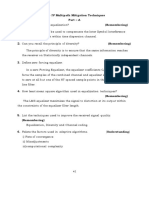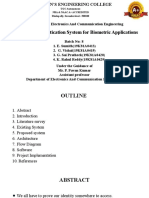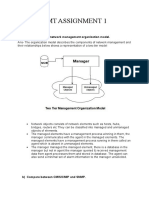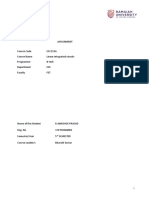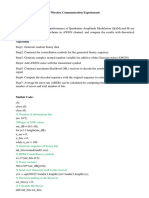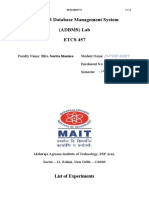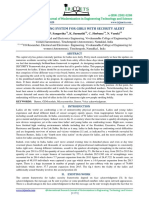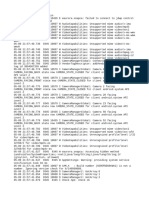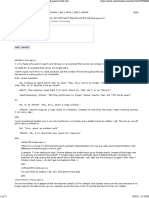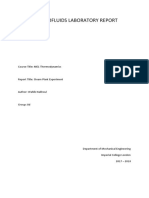100% found this document useful (1 vote)
484 views43 pagesWireless Communication Lab ETCS 463
This document contains a lab report submitted by Sahil Tyagi with enrollment number 06114802717 for the Wireless Communication Lab course. The report details 7 experiments conducted in Scilab to analyze concepts such as co-channel cell distance, frequency reuse ratio, number of channels, signal to noise ratio, Erlang B and C models, and bit error rate performance for BPSK modulation over AWGN and Rayleigh fading channels. Code snippets are provided for each experiment along with inputs, outputs and conclusions.
Uploaded by
MayankCopyright
© © All Rights Reserved
We take content rights seriously. If you suspect this is your content, claim it here.
Available Formats
Download as DOCX, PDF, TXT or read online on Scribd
100% found this document useful (1 vote)
484 views43 pagesWireless Communication Lab ETCS 463
This document contains a lab report submitted by Sahil Tyagi with enrollment number 06114802717 for the Wireless Communication Lab course. The report details 7 experiments conducted in Scilab to analyze concepts such as co-channel cell distance, frequency reuse ratio, number of channels, signal to noise ratio, Erlang B and C models, and bit error rate performance for BPSK modulation over AWGN and Rayleigh fading channels. Code snippets are provided for each experiment along with inputs, outputs and conclusions.
Uploaded by
MayankCopyright
© © All Rights Reserved
We take content rights seriously. If you suspect this is your content, claim it here.
Available Formats
Download as DOCX, PDF, TXT or read online on Scribd
/ 43


